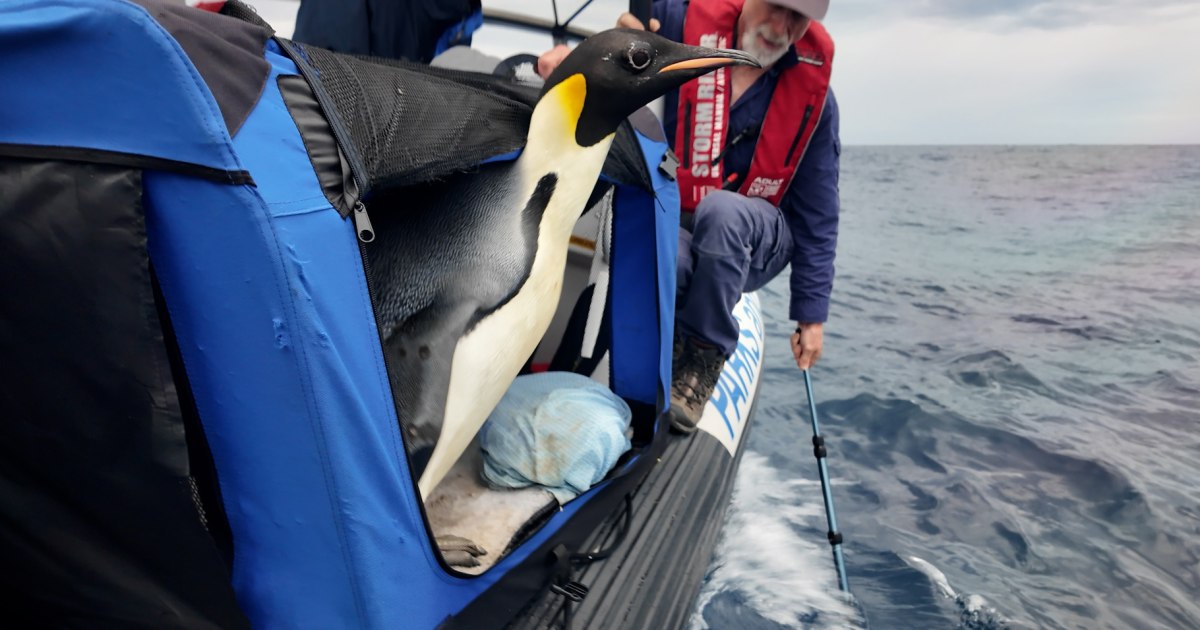The first emperor penguin found in Australia has been released after spending 20 days in the care of a wildlife expert, the Australian government said Friday.
The bird, nicknamed Gus by its caretaker, was released from a vessel off the southern coast of Western Australia on Wednesday morning, according to the state’s Department of Biodiversity, Conservation and Attractions.
“With warmer weather on the horizon, it was time-critical to return it to the ocean where it could thermoregulate itself,” it said in a statement.
The bird, which was malnourished when found on a popular tourist beach on Nov. 1, gained over seven pounds under the care of seabird rehabilitator Carol Biddulph and her husband, a veterinarian.
Their care and attention has given the Antarctic bird, found thousands of miles outside its home range and in a different climate, a “fighting chance of survival,” the statement said.
The team initially weighed the penguin at about 50 pounds, only around half the weight of a healthy male. The bird stands at some 3 feet, 3 inches tall. Its gender has not been confirmed by scientists.
“It’s so exciting to be part of the bird’s journey — right from the rescue, right to the release,” Biddulph said shortly before the penguin was freed. “It’s really something so special.”
Given the malnourishment, Biddulph first fed the penguin fluids and then slurry until it was able to eat whole fish. The bird was also given a mirror to compensate for its lack of companions.
“Good luck, Gus,” Biddulph shouted with a smile after the penguin dived into the water and swam away from the vessel. “Just keep going south, Gus. Don’t stop for anyone.”
It remains unknown how the bird ended up arriving in Australia from its icy Antarctic home.
Emperors are the largest of all penguins, with an average height of 3 feet 7 inches. They are known to travel up to almost 1,000 miles on foraging trips that can last up to a month.


